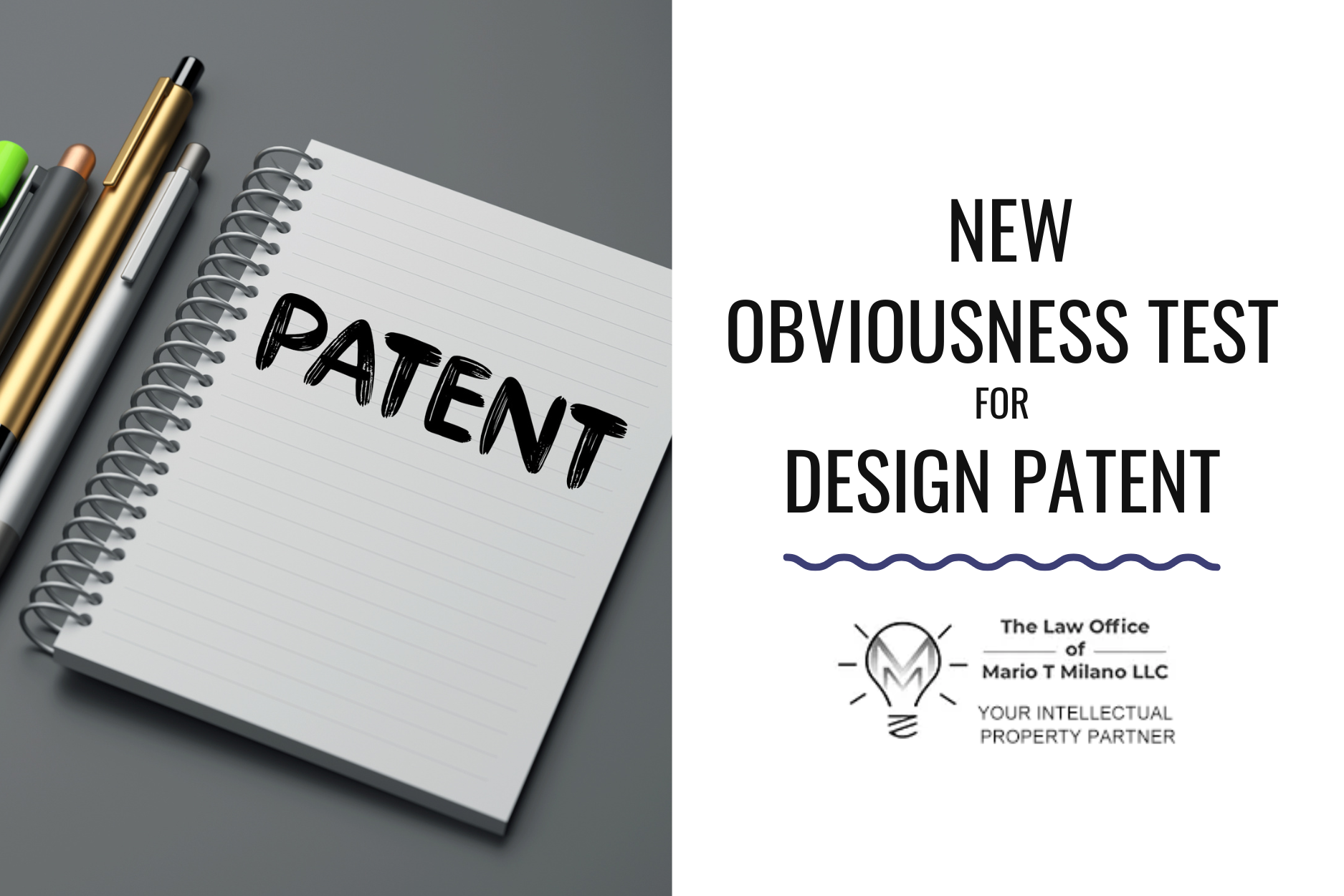
The recent Federal Circuit case, KQ Corp. v. GM Global Tech. Operations LLC, No. 21-2348, has introduced a new obviousness test for design patents. Companies need to understand this new test to stay competitive. But what does this obviousness test really mean, and how should you react to keep your company ahead of competitors? Today, we’ll explain the new test, its implications, and why it’s important to re-evaluate and possibly expand your design patent portfolio.
What is the New Obviousness Test?
The Federal Circuit has replaced the longstanding Rosen-Durling test with a new framework based on principles from utility patents. Previously, the Rosen-Durling test required:
- A primary reference that is “basically the same” as the claimed design.
- Secondary references that are “so related” to the primary reference that features from one would suggest application to the other.
The new test removes these strict requirements. It aligns design patent obviousness with the broader and more flexible standard applied to utility patents as outlined in the Supreme Court cases KSR v. Teleflex and Graham v. John Deere. This change will likely make it harder to obtain and easier to invalidate design patents.
In simpler terms, the new rules make it easier for someone to challenge a design patent and harder for inventors to get new design patents approved.
What the New Test Means for You
The new test affects both pending and existing design patents. What does this mean for your business?
Re-evaluate Existing Patents: The new obviousness test makes existing design patents more likely to be challenged. Review your current patents to identify any that might be at risk. An intellectual property attorney, patent lawyer, or patent prosecution attorney can assist in this process.
Stronger Focus on Visual Similarity: Now, the analysis starts with the closest existing designs and emphasizes overall visual appearance. It looks at the design from the viewpoint of an ordinary designer without needing a high level of similarity. Consult with a design patent attorney to ensure your designs are adequately protected.
Analogous Art Considerations: The new test includes designs from related fields that are relevant to the problem being solved. This means prior art must be from the same field or closely related to it. A patent lawyer or invention patent attorney can help you navigate these nuances.
3 Strategic Steps for Your Success
Sounds overwhelming? Start by taking a few simple steps. Here’s what you can do right now:
1. Analyze Your Existing Patents
- Conduct a thorough review of your design patents to guarantee that they meet the new obviousness criteria. An intellectual property attorney or patent prosecution attorney can provide valuable insights.
- Identify patents that could be challenged and consider reinforcing them with additional evidence of non-obviousness. This could include filing a reissue application or continuation application, highlighting commercial success or industry praise for the underlying product.
2. File Additional Design Patent Applications
- With the new test in mind, consider filing new design patent applications to cover innovative aspects of your products. A design patent attorney or invention patent attorney can guide you through this process.
- Make sure your applications clearly explain the uniqueness and inventive steps of your designs.
- Conduct a prior art search before filing your applications to help avoid obviousness challenges. A patent lawyer can assist in this crucial step.
3. Leverage Your Patents
- Use your patents strategically to protect your market position and attract investors.
- Highlight the strength and breadth of your patent portfolio in business negotiations and marketing materials. Your intellectual property attorney or patent prosecution attorney can help showcase your portfolio effectively.
Why Re-evaluating Your Patent Strategy Matters
A strong patent portfolio is necessary for your company to protect its innovations and stay competitive. The new obviousness test highlights the need for a well-thought-out plan to manage and expand your design patents. Taking action is important! Addressing these changes proactively can protect your intellectual property and support your business growth.
Want to enhance your patent portfolio? For expert advice and support, contact us today. We can help your company with patent law issues, protect your innovations, and promote your business’s success. Let’s secure your future together! An intellectual property attorney, patent lawyer, patent prosecution attorney, invention patent attorney, or design patent attorney at our firm is ready to assist you.

